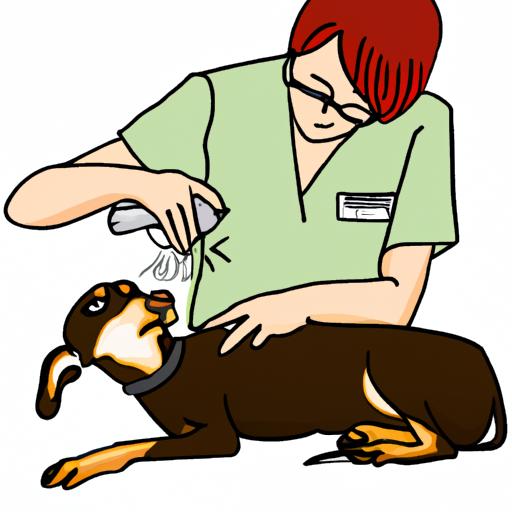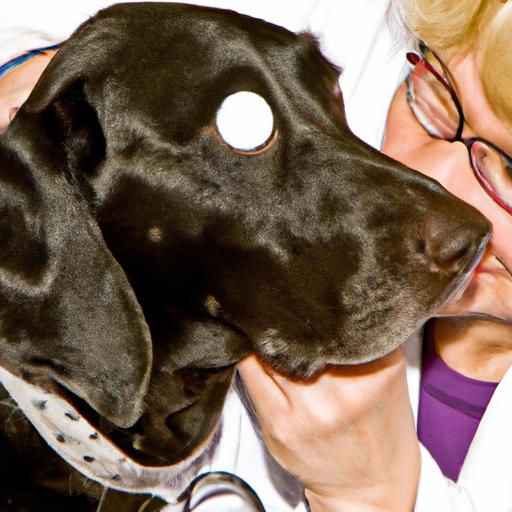
Recognizing Signs of Canine Steroid Responsive Meningitis-Arteritis
Learn to recognize signs of Canine Steroid Responsive Meningitis-Arteritis in dogs. Early detection is crucial for prompt treatment and improved prognosis.
Canine Steroid Responsive Meningitis-Arteritis (CSMRA) is a condition that affects dogs and can have a significant impact on their health and well-being. Recognizing the signs and symptoms of CSMRA is crucial for early detection and timely treatment. In this article, we will explore the typical signs of CSMRA, address frequently asked questions about the condition, and emphasize the importance of recognizing these signs to ensure prompt veterinary intervention.
Introduction
CSMRA is a complex inflammatory condition that primarily affects the meninges, which are the protective membranes surrounding the brain and spinal cord, and the arteries within these tissues. It is characterized by inflammation, leading to severe neck pain, stiffness, and other debilitating symptoms. While the exact cause of CSMRA remains unknown, certain breeds, such as Beagles, Boxers, and Bernese Mountain Dogs, are more prone to developing this condition.
Recognizing Signs of Canine Steroid Responsive Meningitis-Arteritis
Detecting the signs and symptoms of CSMRA is crucial for early intervention. By being aware of the following indicators, pet owners can promptly seek veterinary assistance, potentially improving the prognosis for their beloved companions.
Severe Neck Pain
One of the hallmark symptoms of CSMRA is severe neck pain. Dogs with this condition may exhibit reluctance to move their head or neck, as it causes intense discomfort. If you notice your dog showing signs of neck pain, such as yelping or flinching when touched, it could be an indication of CSMRA.
Reluctance to Move or Exercise
CSMRA can cause dogs to become reluctant to exercise or engage in physical activities. They may exhibit lethargy or appear uninterested in their usual playtime. If your once-active dog suddenly becomes sedentary and shows a lack of enthusiasm for exercise, it may be a sign of CSMRA.
Fever and Loss of Appetite
Inflammatory conditions like CSMRA can lead to fever and loss of appetite in affected dogs. A persistent fever, combined with a decrease in food intake, should be taken seriously and evaluated by a veterinarian. These symptoms may indicate underlying inflammation that requires medical attention.
Stiffness and Difficulty Walking
Dogs with CSMRA often experience stiffness and difficulty walking. They may have a stiff gait, struggle to get up or lie down, or exhibit lameness. If you notice your dog having trouble with mobility or exhibiting an abnormal walking pattern, it could be a sign of CSMRA.
Head Tilt or Abnormal Eye Movements
Another potential sign of CSMRA is a head tilt or abnormal eye movements. Dogs with this condition may tilt their head to one side or display involuntary eye movements, such as nystagmus. These neurological signs should not be ignored and should prompt a visit to the veterinarian for further evaluation.
Behavioral Changes
Behavioral changes, such as increased irritability or depression, can also be observed in dogs with CSMRA. They may become more irritable than usual, snap when touched, or exhibit signs of depression, such as decreased interest in their surroundings or interactions. These changes in behavior may be indicative of underlying inflammatory processes associated with CSMRA.
It is important to note that the severity and combination of these symptoms can vary among different dogs. While some may exhibit multiple signs, others may only display a few. Therefore, it is crucial to be vigilant and consult a veterinarian if any of these signs are observed.
FAQ (Frequently Asked Questions) about Canine Steroid Responsive Meningitis-Arteritis
To provide further clarity about CSMRA, let’s address some frequently asked questions regarding this condition.
What breeds are more prone to CSMRA?
While CSMRA can affect any breed, certain breeds, such as Beagles, Boxers, and Bernese Mountain Dogs, have a higher predisposition to developing this condition. However, it is important to note that CSMRA can occur in any dog, regardless of breed.
Is CSMRA a life-threatening condition?
CSMRA can be a serious condition that requires prompt medical intervention. If left untreated, it can lead to complications such as blindness, seizures, or even death. Therefore, timely recognition and appropriate treatment are essential to improve the prognosis and quality of life for affected dogs.
How is CSMRA diagnosed?
Diagnosing CSMRA requires a thorough evaluation by a veterinarian. The vet will consider the dog’s medical history, perform a physical examination, and may recommend additional diagnostic tests. These tests may include blood work, cerebrospinal fluid analysis, imaging (such as MRI or CT scans), and sometimes even biopsies. A definitive diagnosis of CSMRA is typically made based on clinical signs, response to treatment, and ruling out other possible causes.
What treatment options are available for CSMRA?
The primary treatment for CSMRA involves the use of immunosuppressive medications, particularly corticosteroids. These medications help reduce the inflammation and alleviate the symptoms associated with CSMRA. The dosage and duration of treatment may vary depending on the individual dog’s response and the severity of the condition. In some cases, additional medications or supportive therapies may be recommended to manage pain or address specific complications.
Can CSMRA recur after successful treatment?
Yes, recurrence of CSMRA can occur even after successful treatment. Some dogs may experience relapses or develop a chronic form of the disease that requires ongoing management. Regular follow-up appointments with the veterinarian are crucial to monitor the dog’s condition, adjust medication dosages if needed, and address any new or recurring symptoms promptly.
Conclusion
Recognizing the signs of Canine Steroid Responsive Meningitis-Arteritis is vital for ensuring early detection and timely treatment. By being aware of the typical symptoms such as severe neck pain, reluctance to move or exercise, fever, stiffness, and other indicators, pet owners can seek veterinary assistance promptly. Remember, CSMRA can have serious consequences if left untreated, potentially leading to complications that adversely affect a dog’s quality of life. By staying vigilant and seeking professional help when needed, we can improve the prognosis and overall well-being of our furry companions. Spread awareness about CSMRA and the importance of recognizing its signs to help more dogs receive the necessary care they deserve.
























.jpg)




